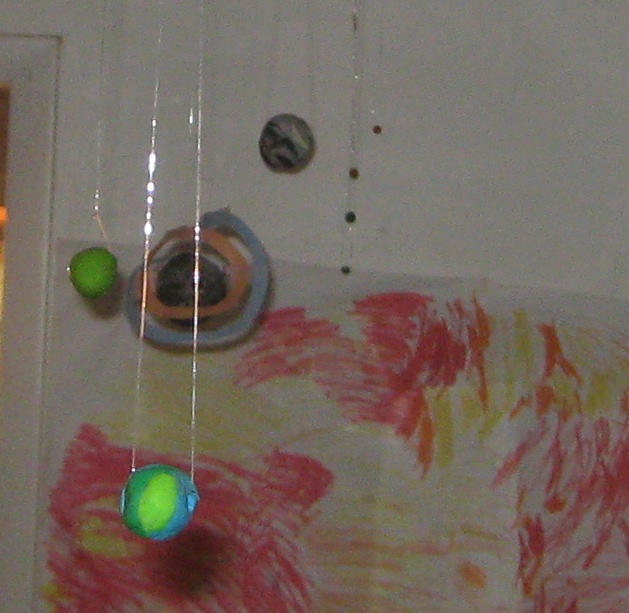Form 0 (Pre-school -Kindergarten) Natural History: Astronomy
Lesson 1: Exploring the Cosmos: What is Astronomy?

- Obtain some resources about astronomy. (A good resource is chapter 2 of Exploring Creation with Astronomy by Jeannie Fulbright, or you can get books from the library on the subject.)
- Read about astronomy and have your student tell you about what he has learned while you record it in his science journal. Have him illustrate the narrative.
- Make a model of the solar system. The Solar System: Model
- Have your student sketch and label the solar system in his science journal.
 Lesson 2: Astronomer's Toolbox
Lesson 2: Astronomer's Toolbox- Learn about lenses.
- Read about Galileo Have your student write about his contribution to astronomy in his science journal
Lesson 3: Earth

- Read about the earth and have your student tell you about what he has learned while you record it in his science journal. Have him illustrate the narrative.
- Pangaea is the name given to the original land mass that eventually became the seven continents that we know today. Read about Pangaea in library resources or textbooks. Pangaea Puzzle (Copy a map of the world and have them cut out the continents and then put them together like a puzzle. We glued ours as it fit together to a piece of paper.) or, you could do a cookie project found at Almost Unschoolers.
- Study and discuss the earth's moving plates.
- Study and discuss the composition of the earth's layers. Make an edible model of the Layers of the Earth.
- Discuss what makes the earth unique among the planets.
Lesson 4: The Sun


- Read about the sun and have your student tell you about what he has learned while you record it in his science journal. Have him illustrate the narrative.
- Solar Power: Make a s'mores oven to capture the sun's energy.
- Make a solar eclipse model.
- Make a pinhole viewing box.
- Using library resources and textbooks, read about the spinning earth and the earth's rotation around the sun. Demonstrate the movement with a flashlight and a ball.
- Make a sundial to observe the movement of the earth. The position of the sun in relation to the earth casts a rotating shadow off the sundial.
- Using library resources and textbooks, read about the seasons and their relationship to the tilt of the earth. Demonstrate the changes with a flashlight and a ball or piece of fruit.
Lesson 5: The Moon


- Make Moon Craters.
- Read about the moon and have your student tell you about what he has learned while you record it in his science journal. Have him illustrate the narrative.
Lesson 6: Earth's Neighbors -The Planets

- How Radar Works
- The Surface of Mars is much like Dry Ice. Dry Ice Investigations
Lesson 7 Stars and Galaxies

- Read about the stars and galaxies and have your student tell you about what he has learned while you record it in his science journal. Have him illustrate the narrative.
- Observe Constellations: The Two Dippers
Lesson 8: Other Stuff in Space
- Make comets using a snow cone maker to shave the ice. Pack the ice together around a thin dowel to form the ice core and give the student a handle to hold onto. Have your student roll it in sand to get the outer dust and add a piece of streamer to represent the tail. Take them outside to fly and melt.
- Make an asteroid treat by making Rice Krispie treat balls and then covering them with chocolate. Roll in peanuts to represent the bits of rock and sprinkles to represent other debris.

